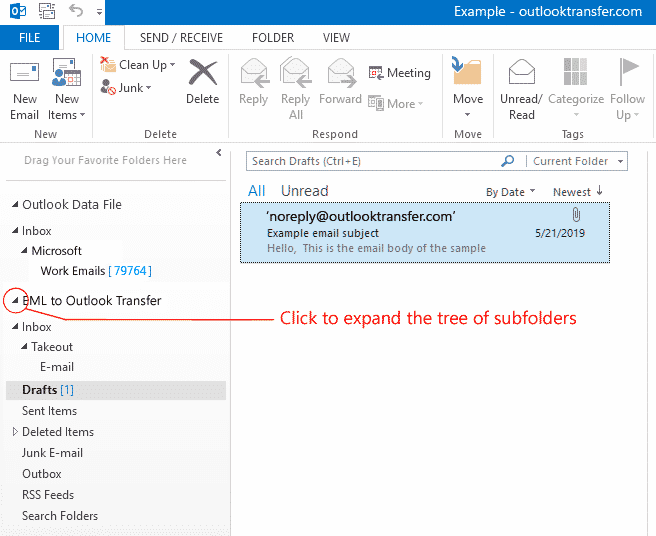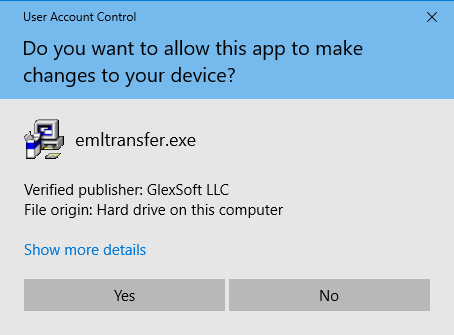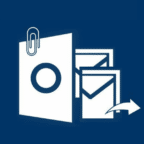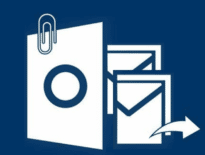If you plan to purchase the Outlook Transfer software, we strongly recommend that you read this article. It describes how to properly evaluate our software and test the basic conversion parameters and modes.
Let’s start with the most frequently asked question:
What is the difference between the free version and the paid version?
The trial version of Outlook Transfer software displays a message when you trying to start the conversion. This message reminds you that free Trial version can import or convert a limited number of emails (or contacts) per folder. However, this does not hinder to evaluate how the program works on your computer and whether it performs all the functions you need.
How to Evaluate the Outlook Transfer software properly
IMPORTANT: A test run should be passed at the same PC where you plan the further use of the software.
Following example is based on EML to Outlook Transfer software evaluation.
- Open software description page and read the brief description. Pay attention to the System Requirements!
- Download software installer and run it. The system may prompt you to allow the installation to continue:
- Click Yes to setup the software, then complete the software installation wizard.
Important! Software installer setups both 32-bit and 64-bit version of the converters but only one of them can be used. You have to use the converter which corresponds to your Outlook version. If you have 32-bit Outlook installed at your PC, you may use only 32-bit converter and if Outlook version is 64-bit, you may use only 64-bit version, it doesn’t matter what OS edition you have. This rule applies to the conversion modes “to Outlook” or “to PST file”.
- When setup will be finished, you will see two shortcuts, one to run 32-bit converter and another to run 64-bit one. Click appropriate shortcut to run the converter.
- Select the folder where your source files and folders are located, use other options according to the software usage instruction. Don’t forget the folder where you new PST file was saved.
Important! Default software working mode is set to “Save to PST file“, we recommend to use this mode for the evaluation. The possibility of direct import to Outlook profile may depend on your account type, account configuration, server preferences and policies of the domain network (for organisations). You may also try to import data directly to Outlook profile, but first, please check if saving to PST works properly.
- Run the conversion and wait till the end of process.
- Inspect the program log if needed and close the program.
Opening PST file in Microsoft Outlook
In order to properly evaluate the result of the conversion, you should open the resulting PST file in Outlook and check the imported data (e-mails, folders, etc.). When you access the Outlook Data File (.pst), it will be displayed in the folder pane. Typically, it will be located towards the end of the folder list. The image provided below serves as an illustration. The actual name of your Outlook Data File (.pst) will be “EML to Outlook Transfer.” only if you used the same named software to create it. Generally, the name of Outlook Data File is derived from the associated account. For instance, if the file is linked to the joe.doe@mail.com account, it will likely be named Joe Doe or joe.doe@mail.com.

Do the following to open PST file in Outlook:
- Open Microsoft Outlook and go to the main window.
- On the left-hand side, locate the “Mail” tab or the “Folder pane” (depending on the version of Outlook you are using).
- Look for the “Folders” section, which should display a list of your email accounts and any PST files you have opened.
- Find the PST file that the user has opened. It may be listed under “Outlook Data File” or with a specific name.
- Click on the small triangle or plus sign next to the PST file name to expand the folder structure.
- Once expanded, you should see a list of folders such as “Inbox,” “Sent Items,” “Drafts,” etc.
- To access the contents of a specific folder, click on its name, and the emails within that folder will be displayed in the main window.
Make sure to emphasize the importance of scrolling down the folder list and expanding the folders structure to locate the desired content within the PST file.
Don’t forget that free version imports limited amount of emails per folder. Full activated version of Outlook Transfer software do not have such limits i.e. it allows to import unlimited amount of emails.
Let us know if you have any questions or concerns regarding to our software. We will be happy to help you to migrate your emails to Outlook smoothly and without major efforts.
Read also:
- How to save backup copy and restore outlook data
- How to transfer emails from Thunderbird to Outlook
- How to migrate from Live Mail to Microsoft Outlook
- How to open MBOX files and convert *.mbox to Outlook *.pst format









